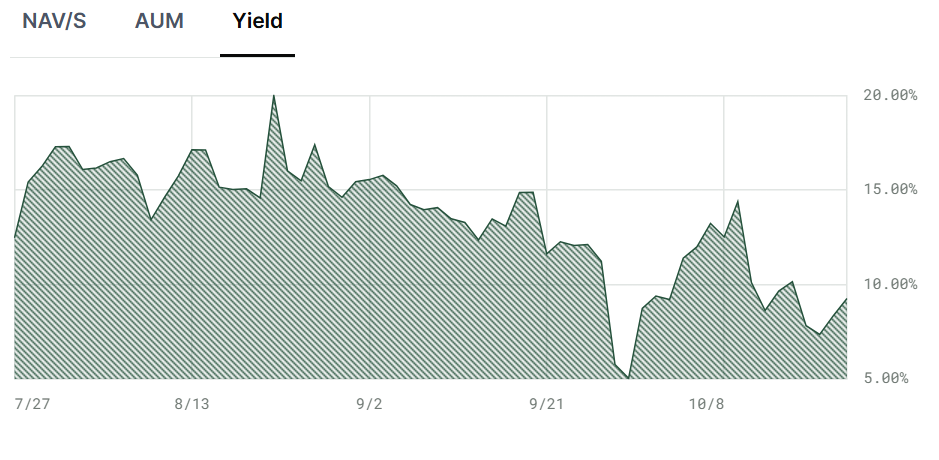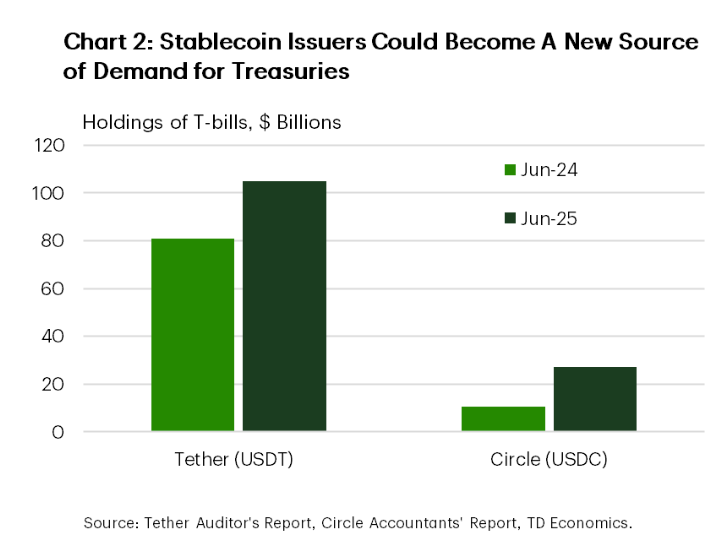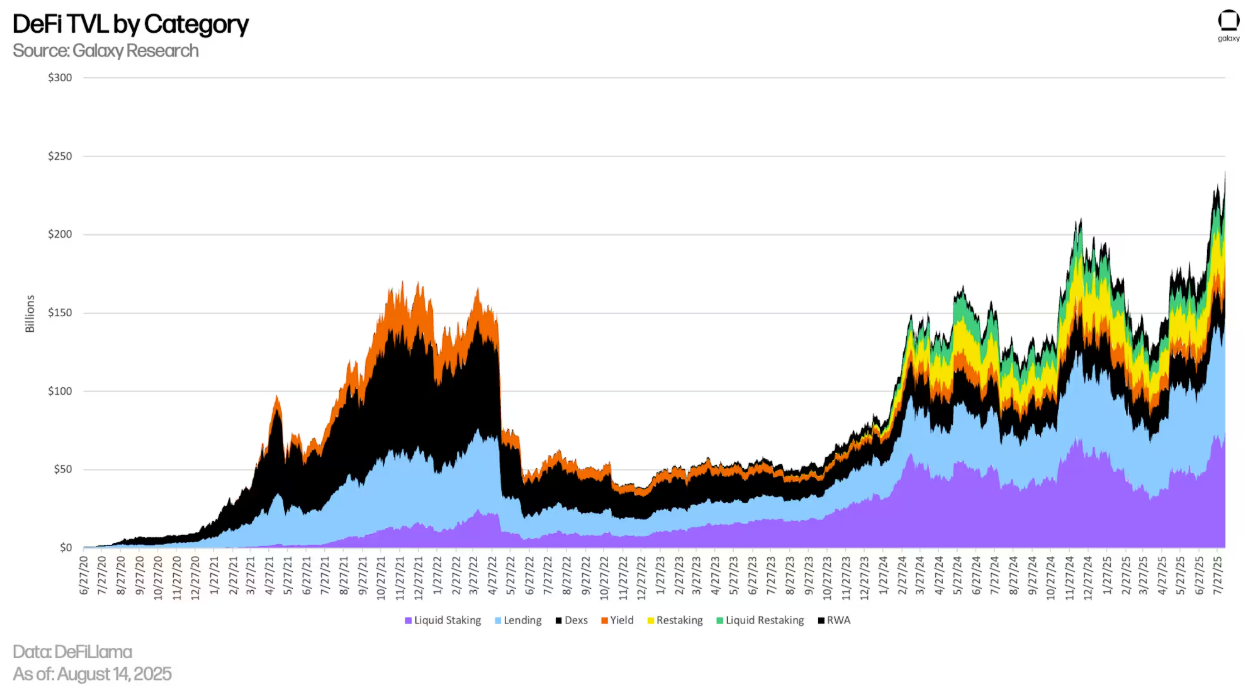Spark has invested $100 million from its stablecoin reserves into Superstate’s Crypto Carry Fund, a regulated vehicle offering 9.26% yield through basis trading in digital assets. This move highlights DeFi’s shift to uncorrelated yield sources as Treasury yields drop below 4%.
-
Spark allocates $100 million to Superstate’s USCC fund for market-neutral yields.
-
The fund targets price differentials in spot and futures markets across major cryptocurrencies.
-
With $528 million in assets, USCC provides 9.26% 30-day yield, diversifying from declining Treasury returns.
Spark’s $100 million investment in Superstate Crypto Carry Fund boosts DeFi yields amid falling Treasurys. Explore how this pivot to basis trading secures uncorrelated returns for protocols. Read now for insights on onchain strategies.
What is Spark’s $100 Million Investment in Superstate’s Crypto Carry Fund?
Spark’s $100 million investment in Superstate’s Crypto Carry Fund represents a strategic rotation of its treasury reserves from US government bonds to crypto-native yield strategies. This allocation targets the fund’s basis-trading approach, which generates returns from discrepancies between spot and futures prices in major digital assets. By doing so, Spark aims to maintain stable yields independent of traditional interest rate policies, especially as the Federal Reserve’s rate cuts compress Treasury returns.

USCC yield history. Source: Superstate
Superstate’s Crypto Carry Fund, known as USCC, operates as a regulated basis-trading fund designed for DeFi protocols seeking market-neutral yields. According to data from Superstate, the fund currently manages approximately $528 million in assets and delivers a 30-day yield of 9.26%. This performance stems from exploiting inefficiencies in derivatives markets, similar to tactics employed by traditional hedge funds, but adapted for onchain environments.
Superstate CEO Robert Leshner emphasized that the fund allows Spark to pursue yield opportunities uncorrelated with Federal Reserve rate policies. In a landscape where the 10-year Treasury yield has recently dipped below 4%, this diversification becomes crucial. The Federal Reserve’s ongoing efforts to balance inflation control and economic growth have led to a flattening yield curve, partly influenced by escalating US fiscal pressures.
Spark’s decision underscores vulnerabilities for stablecoin issuers and DeFi protocols heavily reliant on short-duration Treasurys. As the Fed enters a rate-cutting cycle, these entities face squeezed margins on their Treasury holdings. Tether, the largest stablecoin issuer, holds over $100 billion in US Treasurys, while Circle, issuer of USDC, maintains a significant but smaller position. Combined, these two giants accounted for more than $132 billion in US government debt as of September.

Tether and Circle’s Treasury holdings. Source: TD Economics
TD Economics analysis indicates that stablecoin holdings represent about 2% of the Treasury bills market currently. However, this proportion could grow substantially if stablecoin supply expands rapidly, further intertwining crypto ecosystems with traditional finance dynamics.
How Does Onchain Yield Evolve Beyond Traditional Passive Income?
Onchain yield in DeFi has matured significantly, transitioning from basic lending and staking models to advanced strategies like basis trading and restaking. These mechanisms now prioritize risk-adjusted returns, liquidity preservation, and independence from macroeconomic factors such as interest rate fluctuations. For instance, basis trading in funds like USCC capitalizes on temporary mispricings between spot prices and futures contracts for assets like Bitcoin and Ethereum, yielding returns without directional market bets.
Research from Galaxy Digital highlights that onchain yield strategies have diversified to include validator rewards and restaking protocols, which remain uncorrelated with traditional monetary policy. Despite this evolution, Treasury yields continue to act as a foundational benchmark, establishing a risk-free floor for DeFi returns. As these benchmark rates decline—exacerbated by the Fed’s policy shifts—protocols are compelled to explore crypto-native alternatives that offer higher, more stable yields.

DeFi total value locked by category. Source: Galaxy
Galaxy Digital reports that DeFi’s total value locked has seen growth in sophisticated categories, with basis trading and derivatives-based yields gaining traction. This shift not only enhances return potential but also mitigates exposure to fiscal uncertainties, such as potential US government shutdowns that could disrupt Treasury markets. Spark’s allocation exemplifies how DeFi protocols are proactively adapting, ensuring resilience in a volatile economic environment.
The broader implications for the crypto sector involve a deeper integration of regulated funds like USCC, which provide institutional-grade compliance while delivering onchain efficiency. Stablecoin issuers, in particular, stand to benefit from such diversification, as their vast Treasury portfolios become less viable amid compressing yields. Experts from TD Economics and Galaxy Digital agree that this trend toward uncorrelated yields could redefine DeFi’s role in global finance, fostering innovation without over-reliance on government securities.
Frequently Asked Questions
What prompted Spark to allocate $100 million to Superstate’s Crypto Carry Fund?
Spark’s move was driven by declining Treasury yields, now below 4%, which reduce returns on traditional holdings. The fund offers 9.26% yield through regulated basis trading, providing diversification and stability for DeFi protocols amid Fed rate cuts and fiscal pressures.
How does basis trading in crypto funds like USCC generate yield for DeFi?
Basis trading exploits price differences between spot and futures markets for cryptocurrencies, allowing investors to earn from market inefficiencies without betting on price direction. In USCC, this strategy delivers market-neutral returns, currently at 9.26% over 30 days, ideal for stablecoin treasuries seeking uncorrelated income.
Key Takeaways
- Spark’s strategic pivot: Allocating $100 million to USCC diversifies from Treasurys, securing 9.26% yield via basis trading amid rate cuts.
- Stablecoin exposure risks: Tether and Circle hold over $132 billion in US debt, but growing supply could amplify market impacts as yields compress.
- Onchain yield innovation: DeFi evolves with uncorrelated strategies like restaking, offering higher returns independent of traditional policy.
Conclusion
Spark’s $100 million investment in Superstate’s Crypto Carry Fund marks a pivotal shift in DeFi yield strategies, emphasizing basis trading and diversification from declining Treasury yields. As stablecoin issuers like Tether and Circle navigate fiscal uncertainties, onchain alternatives provide resilient, uncorrelated returns. Looking ahead, this trend could strengthen DeFi’s position in finance, encouraging protocols to adopt sophisticated, market-neutral approaches for sustained growth.
